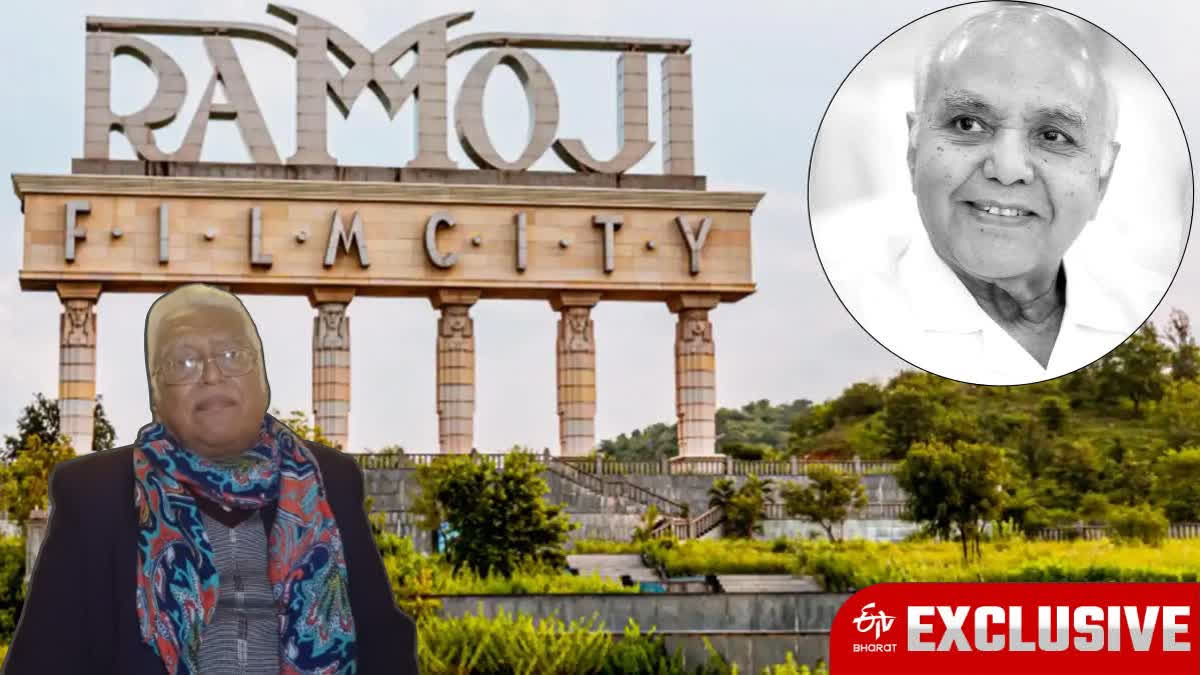Kolkata: Nitish Roy, an exceptional art director, has recently unveiled his collection of digital paintings. An exhibition of his digital works is currently being held at the South Gallery of the Academy of Fine Arts in Kolkata. The show offers a glimpse into the evolving artistic expression of Roy, whose illustrious career in film has earned him global recognition, especially for his contributions to Gladiator, the Oscar-winning Hollywood film.
Roy, who started his digital painting journey just a year ago, speaks passionately about this transition. His son, recognising his father's creative drive, gifted him the necessary equipment for digital painting. "I started learning digital art, and I saw a shift in how people approach this medium. Many focus on cutting and pasting, but few try to convert traditional painting into digital formats. I have chosen to take that direction,” says Roy.
The exhibition displays his works that reflect the current turbulent situation in India, with Roy stating, "Artists have a responsibility to highlight the times we live in." The focus on societal upheaval and unrest is evident in the nuanced works presented, marking his engagement with the world around him.
The Making of Ramoji Film City
While Roy's exhibition highlights his artistic journey, another of his greatest legacies remains the creation of the Ramoji Film City. As the architect behind the world's largest film city, Roy recounts his pivotal role in turning Ramoji Rao's dream into reality. Speaking fondly of the late media mogul Ramoji Rao, Roy recalls the time when Rao first approached him with the idea of creating a film city. "Ramoji Rao Garu was incredibly hospitable and deeply attached to his vision. He asked me to join him in building a grand film city. I agreed, and for seven years, I dedicated myself entirely to this project," shares Roy.
The result of those seven years of intense work was Ramoji Film City, a 2000-acre wonder that is today a cornerstone of India's entertainment industry. Roy's meticulous attention to detail and creative input shaped the film city into a global marvel. His role extended beyond architecture; he even suggested launching a Bengali channel, which eventually became ETV Bangla, a name he recommended. "I suggested the name ETV Bangla instead of Gitanjali to match the Telugu channel, and he agreed," says Roy with pride.
Nitish Roy's career in cinema began with his role as an art director in Mrinal Sen's Kharij, after which he went on to work in numerous Hindi and Bengali films. Over the years, he also ventured into costume designing and film direction. Some of his directorial works include Jamai Number One, Buddhubhootum, and Gonsaibaganer Bhoot. But it was his exceptional production design and art direction in films like Gladiator that catapulted him to international fame.
Reflecting on his evolution as an artist, Roy acknowledges the monumental role of Shyam Benegal and Mrinal Sen in shaping his career. "Shyam Benegal is my mentor. He has taught me much, both in films and documentaries," says Roy. As much as Roy is deeply connected to the traditional world of film and art, he also recognises the necessity of adapting to modern technology. "The era of AI has arrived, and digital paintings are the future. If we do not embrace this, we will fall behind," he cautions.
Roy, who is fully aware of the increasing dominance of artificial intelligence in creative fields, urges the next generation of artists to master digital tools to stay relevant in an ever-changing world. Though his work in cinema and digital art remains expansive, he now plans to venture into children's filmmaking, acknowledging the lack of strong distribution networks for Bengali films. "There are very few distributors for Bengali films. I want to make films that cater to children, with an emphasis on their education and development," he says.
Read More



